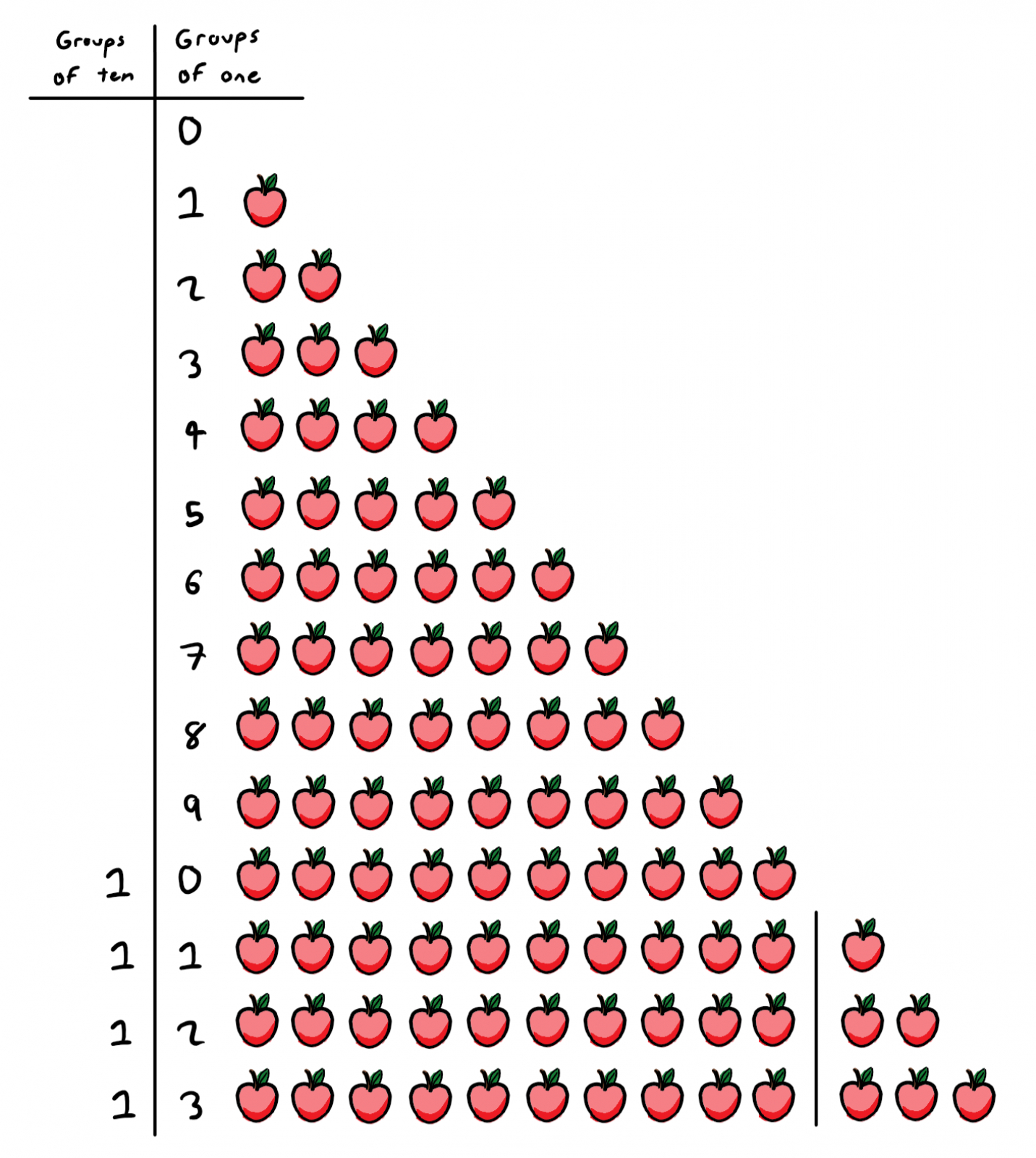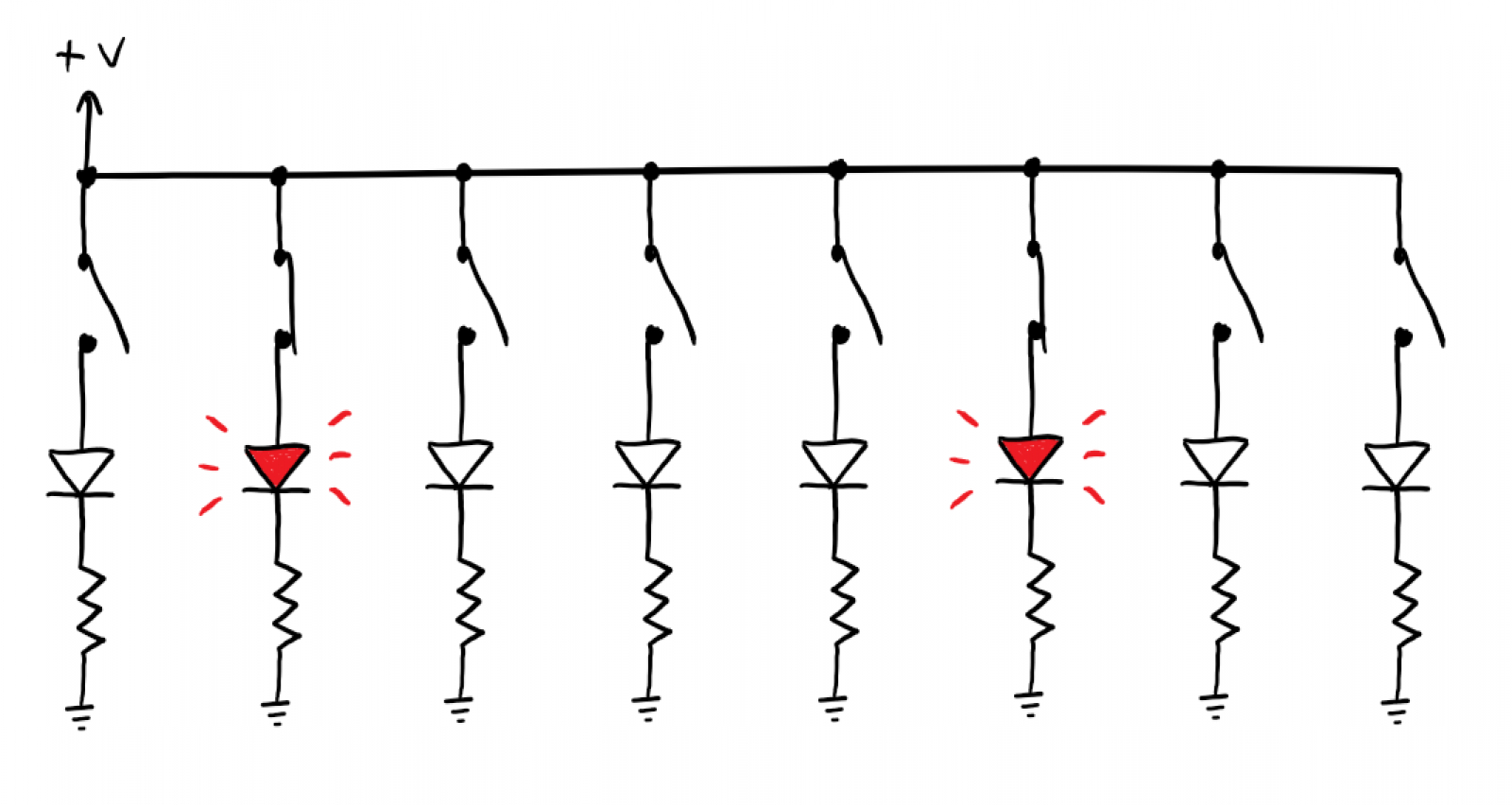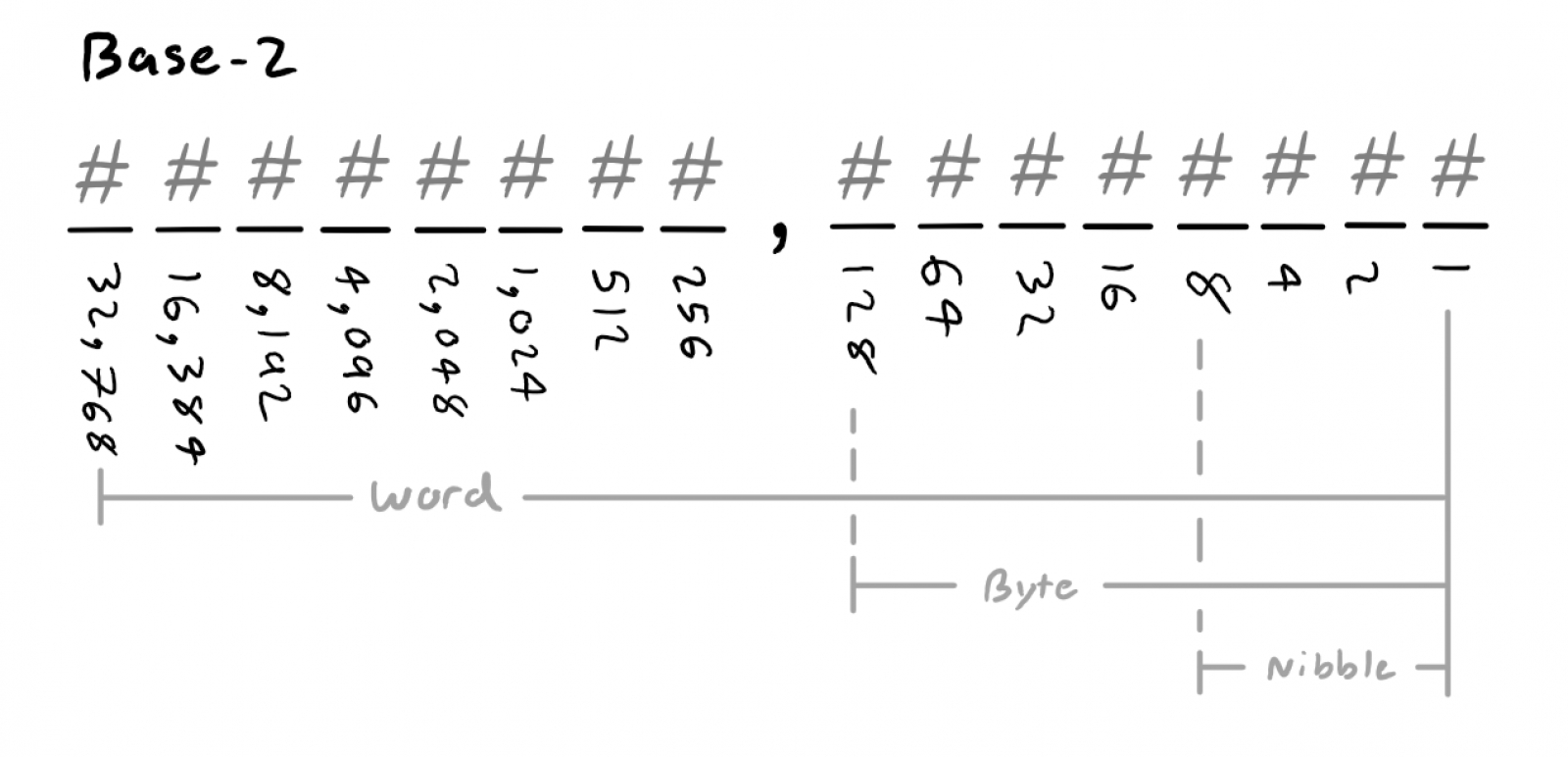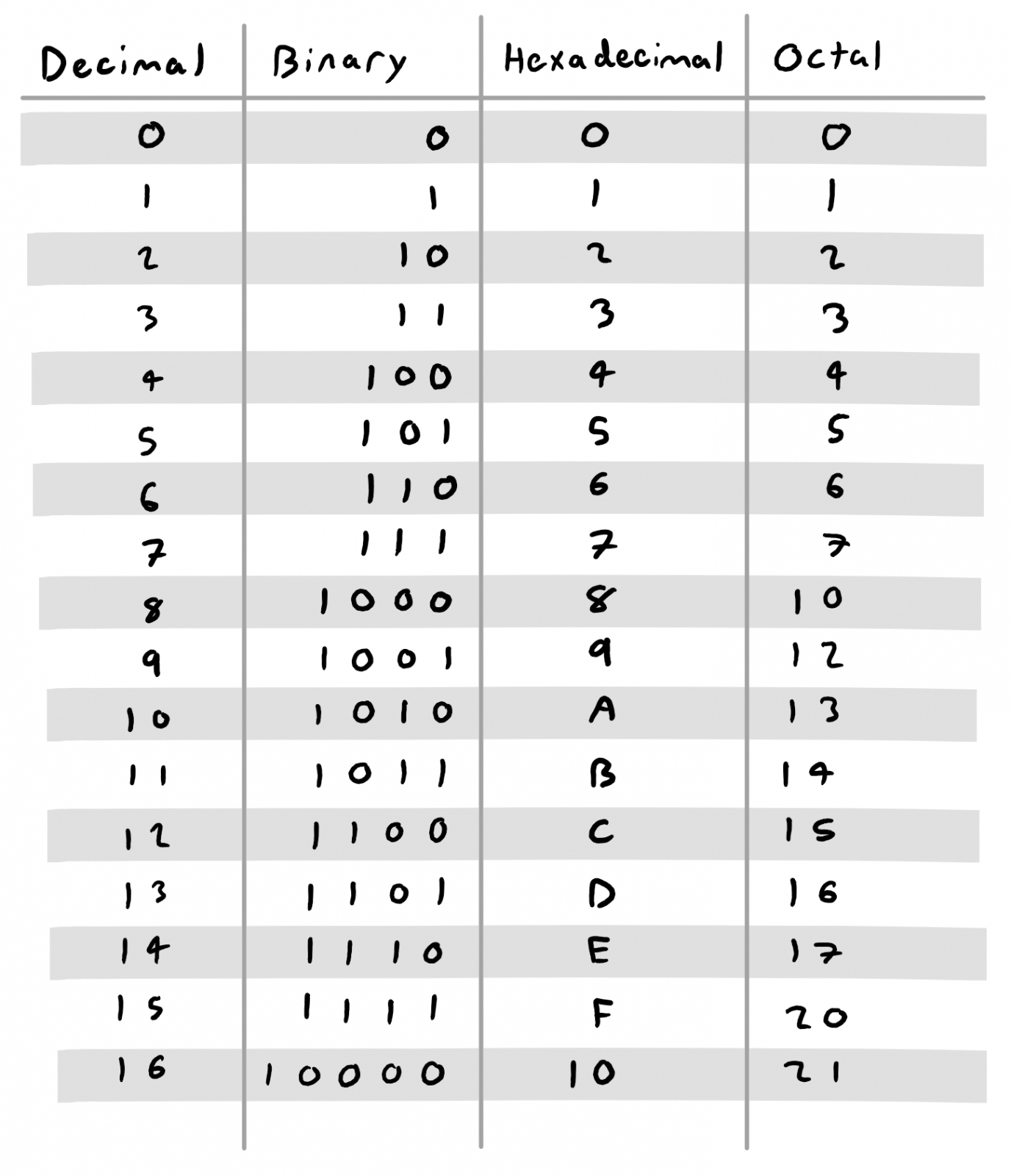Number Systems
It's just about nightfall, and a bright orange sky casts long shadows upon a meandering road. Two hitchhikers, weary from a long day of collecting fruit, hoist upon their shoulders burlap sacks, and head toward a nearby cavern."Ada?""Yes?", replies a weary Ada, as she spins her bow drill in effort to build this evening's fire."We've collected a good deal of fruit today.""Yes we have, but there is a storm approaching, and one that's certain to last for quite a while."A transient look of worry passes Thomas's face, but it is soon replaced by one of curiosity as he replies, "Yes, there is. This begs me to wonder, how are we to make certain that our food supply is to last throughout the duration of this storm?"The bow drill's motions cease, as Ada ponders the thought."You know, I am not sure.", replies the enticed explorer, as she stares at her tinder's embers. As they slowly lose luminosity, she glances at the harvest and notes "This is not the first time I have considered this problem myself."Ada stares once more at her embers, which are now a dull red in color. "Perhaps we should devise a means of keeping track of our food stock, in a way similar to the letters of the alphabet. "You mean, to draw a symbol for each quantity?", scoffs Thomas, embracing the air with open arms. "It would be impossible to remember so many figures!""Well then invent a better means!" snaps the indignant fire tender. Thomas, sighing at the absurdity of the idea points to Ada's kindling and suggests, "What if we were to represent their quantity with bundles? Each stick signifies a fruit, and we can tie them in regular groups to make keeping track of them simple."
"You mean, to draw a symbol for each quantity?", scoffs Thomas, embracing the air with open arms. "It would be impossible to remember so many figures!""Well then invent a better means!" snaps the indignant fire tender. Thomas, sighing at the absurdity of the idea points to Ada's kindling and suggests, "What if we were to represent their quantity with bundles? Each stick signifies a fruit, and we can tie them in regular groups to make keeping track of them simple." "That's a bit better, but I feel like it isn't a solution to our problem. What if our harvests are so great that we have trouble keeping track of the bundles themselves?". Ada, once more lost in the reciprocating motions of the bow drill ponders her own concern. As a luscious plasma erupts from the charred tinder, a look of intrigue bestows her face. "Hm. What if we were to have a limited amount of symbols, which we could combine in a structured way? Each symbol could represent some grouping of apples, and, when a bundle is formed, the symbols themselves could be used to also represent the bundles." "Such that, the order of the symbols is significant?", a curious Thomas remarks as he begins to consume some of today's picked fruit."Yes. The endless combination of these symbols could represent any amounting. All that's to remember is a small set of figures, and the significance of their order."A few minutes pass as Ada tends to the fire. "This begs me to ask, how many symbols should we need?"Thomas, lost in the question stares at the apple in his hand. As he does, a smile begins to accrue.
"That's a bit better, but I feel like it isn't a solution to our problem. What if our harvests are so great that we have trouble keeping track of the bundles themselves?". Ada, once more lost in the reciprocating motions of the bow drill ponders her own concern. As a luscious plasma erupts from the charred tinder, a look of intrigue bestows her face. "Hm. What if we were to have a limited amount of symbols, which we could combine in a structured way? Each symbol could represent some grouping of apples, and, when a bundle is formed, the symbols themselves could be used to also represent the bundles." "Such that, the order of the symbols is significant?", a curious Thomas remarks as he begins to consume some of today's picked fruit."Yes. The endless combination of these symbols could represent any amounting. All that's to remember is a small set of figures, and the significance of their order."A few minutes pass as Ada tends to the fire. "This begs me to ask, how many symbols should we need?"Thomas, lost in the question stares at the apple in his hand. As he does, a smile begins to accrue.
 Numerals that signify a quantity ten times less, are placed to the right, behind a radix.
Numerals that signify a quantity ten times less, are placed to the right, behind a radix. It's helpful to think of a number as a just a word -like any other word in a language. The numerals, 0,1,2,3,4,5,6,7,8,9 are the alphabet, and the combination of these numerals may be used to represent any quantity.
It's helpful to think of a number as a just a word -like any other word in a language. The numerals, 0,1,2,3,4,5,6,7,8,9 are the alphabet, and the combination of these numerals may be used to represent any quantity.
 In the binary system, each place value is known as a bit. The concatenation of 4 bits is known as a nibble, and the concatenation of 8 bits is known as a byte. Two bytes from a 16-bit word, and two words form a 32-bit long word. Two long words form a double, and the double is what is used to store really, really big numbers, in modern, 64-bit computer architectures.
In the binary system, each place value is known as a bit. The concatenation of 4 bits is known as a nibble, and the concatenation of 8 bits is known as a byte. Two bytes from a 16-bit word, and two words form a 32-bit long word. Two long words form a double, and the double is what is used to store really, really big numbers, in modern, 64-bit computer architectures.  Other number systems exist too, such as base-8 (octal) and base-16 (hexadecimal), but these are rare in everyday use, and are mostly seen by engineers and computer programmers.
Other number systems exist too, such as base-8 (octal) and base-16 (hexadecimal), but these are rare in everyday use, and are mostly seen by engineers and computer programmers.  Each number system has its advantages and disadvantages. For most mathematical purposes, the decimal system is ideal as it is universally understood, and is the default concept which comes to mind when people think of "numbers". For computer engineering on the other hand, hexadecimal is very common. Since each numeral in a HEX value represents exactly 4 bits, "FF" is conveniently, the maximum value you can store in one byte (255).
Each number system has its advantages and disadvantages. For most mathematical purposes, the decimal system is ideal as it is universally understood, and is the default concept which comes to mind when people think of "numbers". For computer engineering on the other hand, hexadecimal is very common. Since each numeral in a HEX value represents exactly 4 bits, "FF" is conveniently, the maximum value you can store in one byte (255).



The Decimal Number System
The Decimal number system is the standard that much of this world uses to represent quantities.It is a system which relies on the concept of place value; in which, the order of the numerals represents the values they represent. The place value of the Decimal numbers follows a base of 10, which means, when we have fully cycled through all valid numerals, another one, signifying a quantity ten times that of the previous numeral, is concatenated to the left of our number.


Base-2 Numerals
The base-10 number system differs somewhat from the number system used by computers, which is base-2, or binary. In the binary number system there exists only two numerals, 0, and 1, and, just like the decimal system, their combinations may be used to represent any quantity. This system is ideal in electronics, because the numerals 0, and 1 may be represented by switches that are either open, or closed (on, or off). There's no ambiguity here, as a switch can't be somewhere in the middle!

